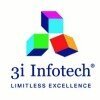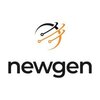
i
Maveric
Systems
Filter interviews by
Maveric Systems Interview Questions and Answers
51 Interview questions
Kaizen change focuses on continuous improvement through small, incremental changes in processes and practices.
Identify areas for improvement: Regularly assess processes to find inefficiencies, like reducing data redundancy in databases.
Engage team members: Involve all stakeholders in brainstorming sessions to gather diverse perspectives on potential improvements.
Implement small changes: Start with minor adjustment...
Maveric was founded in 2000, specializing in software testing and quality assurance services for various industries.
Founded in 2000: Maveric has over two decades of experience in the software testing domain.
Focus on Quality Assurance: The company emphasizes delivering high-quality software solutions to its clients.
Diverse Industry Expertise: Maveric serves clients across various sectors, including banking, insuran...
Maveric is co-founded by Ranjit Singh, who has extensive experience in the IT and software testing industry.
Ranjit Singh: He is one of the key figures behind Maveric, contributing to its vision and growth in the software testing domain.
Industry Experience: Ranjit has a strong background in IT services, which has helped Maveric establish itself as a leader in testing solutions.
Focus on Quality Assurance: Under Ranj...
A singleton class ensures a single instance throughout the application lifecycle, providing a global access point.
A singleton class restricts instantiation to one object.
It is often used for shared resources like configuration settings.
In Swift, you can implement a singleton using a static constant.
Example: `class Singleton { static let shared = Singleton() }`
Singletons can lead to issues like global state and dif...
A generic method in Swift allows for type flexibility, enabling code reuse and type safety.
Use 'func <name><T>(<parameters>) -> <returnType>' to define a generic method.
Example: 'func swap<T>(_ a: inout T, _ b: inout T) {' swaps two values of any type.
Generics can be constrained using 'where' clause for specific type requirements.
Example: 'func printArray<T: CustomStringConverti...
Reverse a string without changing index
Iterate through each string in the array
Reverse each string using built-in functions or manual reversal
Store the reversed strings back in the array
Regression testing ensures existing functionality still works after changes, while sanity testing checks if new functionality works as expected.
Regression testing is done to make sure that new code changes have not affected existing functionality.
Sanity testing is a cursory testing to make sure that the new functionality is working as expected.
Regression testing is comprehensive and covers all areas of the applica...
Unit test is a type of testing where individual units or components of a software are tested in isolation.
Unit test is performed by developers to ensure that each unit of code is working correctly.
It helps in identifying bugs early in the development process.
Unit tests are usually automated and run frequently during the development cycle.
Examples of unit testing frameworks include JUnit for Java, NUnit for .NET, a...
Automate a website when repetitive tasks need to be performed frequently and consistently.
Automate when manual testing becomes time-consuming and inefficient
Automate when the website has a large number of test cases that need to be executed regularly
Automate when the website undergoes frequent changes and regression testing is required
Automate when the website needs to be tested across multiple browsers and device...
Test plan outlines the overall testing approach, while test design specifies how individual test cases will be created and executed.
Test plan is a high-level document outlining testing objectives, resources, schedule, and scope
Test design is a detailed document specifying test cases, test data, and expected results
Test plan focuses on the overall testing strategy, while test design focuses on the specifics of indi...
Maveric Systems Interview Experiences
125 interviews found
I appeared for an interview in Jun 2025, where I was asked the following questions.
- Q1. Previous project details Core banking Finacle TCS bance application
- Q2. Credit card onboarding process Credit card management system Test techniq Scenario base like developer denied your defect then how to approach
I applied via Naukri.com and was interviewed in Oct 2024. There were 4 interview rounds.
(2 Questions)
- Q1. Detailed questions related to data engineering
- Q2. Pyspark and SQL problems
(1 Question)
- Q1. Hadoop and data engineering mix questions
(1 Question)
- Q1. Mixed of DE and Scenario based questions
(1 Question)
- Q1. Expectations and salary discussion
I applied via Naukri.com and was interviewed in Dec 2024. There was 1 interview round.
How can nested loops be avoided? Please create a report outlining the criteria.
(2 Questions)
- Q1. NAf ehkhe k efkejf kew efk jfnkjdn
- Q2. NAdfsdf dnfndkjsf dnf ndfkne nkdnfk
Interview Preparation Tips
The aptitude level is not a big deal to crack. Most of answers you will get by Google itself
(2 Questions)
- Q1. 90% of the questions would be fully from your resume.
- Q2. 10% of the questions related to Testing and it's life cycle
Interview Preparation Tips
1 Hours aptitude test on hacker rank based on Aptitude question, Java, SQL
(2 Questions)
- Q1. Java interview questions.
- Q2. What is wrapper class?
- Ans.
Wrapper class is a class that wraps around a primitive data type and provides additional functionality.
Wrapper classes in Java are used to convert primitive data types into objects.
They provide methods to access the value of the wrapped primitive type.
Examples include Integer, Double, Boolean, etc.
(1 Question)
- Q1. Salary discussion and all.
Skills evaluated in this interview
I applied via Walk-in and was interviewed in May 2024. There were 2 interview rounds.
(4 Questions)
- Q1. What is meant by RTM
- Ans.
RTM stands for Requirements Traceability Matrix, a document that links requirements to test cases to ensure all requirements are covered.
RTM is a document used in software testing to ensure that all requirements are covered by test cases.
It helps in tracking the progress of testing by linking each requirement to its corresponding test case.
RTM is a useful tool for ensuring comprehensive test coverage and for identifyin...
- Q2. Los-LMS process
- Q3. Difference between regression and Sanity
- Ans.
Regression testing ensures existing functionality still works after changes, while sanity testing checks if new functionality works as expected.
Regression testing is done to make sure that new code changes have not affected existing functionality.
Sanity testing is a cursory testing to make sure that the new functionality is working as expected.
Regression testing is comprehensive and covers all areas of the application.
...
- Q4. Quality assurance vs quality control
- Ans.
Quality assurance focuses on preventing defects, while quality control focuses on identifying and fixing defects.
Quality assurance involves processes and procedures to prevent defects from occurring.
Quality control involves activities to identify defects and ensure they are fixed.
Quality assurance is proactive, while quality control is reactive.
Examples of quality assurance include code reviews, process audits, and tra...
(3 Questions)
- Q1. What is meant by unit test and who do it
- Ans.
Unit test is a type of testing where individual units or components of a software are tested in isolation.
Unit test is performed by developers to ensure that each unit of code is working correctly.
It helps in identifying bugs early in the development process.
Unit tests are usually automated and run frequently during the development cycle.
Examples of unit testing frameworks include JUnit for Java, NUnit for .NET, and py...
- Q2. What is difference between test plan and test design
- Ans.
Test plan outlines the overall testing approach, while test design specifies how individual test cases will be created and executed.
Test plan is a high-level document outlining testing objectives, resources, schedule, and scope
Test design is a detailed document specifying test cases, test data, and expected results
Test plan focuses on the overall testing strategy, while test design focuses on the specifics of individua...
- Q3. When will you automate a website
- Ans.
Automate a website when repetitive tasks need to be performed frequently and consistently.
Automate when manual testing becomes time-consuming and inefficient
Automate when the website has a large number of test cases that need to be executed regularly
Automate when the website undergoes frequent changes and regression testing is required
Automate when the website needs to be tested across multiple browsers and devices
Interview Preparation Tips
Skills evaluated in this interview
- Q1. What are the differences and use cases for the SQL queries 'RANK' and 'DENSE_RANK'?
- Q2. PySpark architecture , Pyspark DataFrame queries?
I appeared for an interview in Mar 2025, where I was asked the following questions.
- Q1. Who is the CEO for Maveric
- Q2. At what year, Maveric was founded in?
- Ans.
Maveric was founded in 2000, specializing in software testing and quality assurance services for various industries.
Founded in 2000: Maveric has over two decades of experience in the software testing domain.
Focus on Quality Assurance: The company emphasizes delivering high-quality software solutions to its clients.
Diverse Industry Expertise: Maveric serves clients across various sectors, including banking, insurance, a...
- Q3. Who is the Co founder of Maveric
- Ans.
Maveric is co-founded by Ranjit Singh, who has extensive experience in the IT and software testing industry.
Ranjit Singh: He is one of the key figures behind Maveric, contributing to its vision and growth in the software testing domain.
Industry Experience: Ranjit has a strong background in IT services, which has helped Maveric establish itself as a leader in testing solutions.
Focus on Quality Assurance: Under Ranjit's ...
(1 Question)
- Q1. What is testing
- Ans.
Testing is the process of evaluating a software application to identify defects or bugs.
Testing involves executing the software with the intent of finding defects.
It ensures that the software meets the specified requirements and works as expected.
Types of testing include functional testing, performance testing, and security testing.
Examples of testing tools include Selenium, JUnit, and LoadRunner.
Interview Preparation Tips
Top trending discussions






Maveric Systems Interview FAQs
The duration of Maveric Systems interview process can vary, but typically it takes about less than 2 weeks to complete.
Tell us how to improve this page.
Maveric Systems Interviews By Designations
- Maveric Systems Test Engineer Interview Questions
- Maveric Systems Software Engineer Interview Questions
- Maveric Systems Senior Test Engineer Interview Questions
- Maveric Systems Senior Software Engineer Interview Questions
- Maveric Systems Data Engineer Interview Questions
- Maveric Systems Software Developer Interview Questions
- Maveric Systems Associate Consultant Interview Questions
- Maveric Systems Software Tester Interview Questions
- Show more
Interview Questions for Popular Designations
- Test Engineer Interview Questions
- Software Engineer Interview Questions
- Senior Test Engineer Interview Questions
- Data Engineer Interview Questions
- Senior Software Engineer Interview Questions
- Associate Software Engineer Interview Questions
- Manager Interview Questions
- Assistant Manager Interview Questions
- Show more
Overall Interview Experience Rating
based on 101 interview experiences
Difficulty level
Duration
Interview Questions from Similar Companies
Maveric Systems Reviews and Ratings
based on 706 reviews
Rating in categories
|
Senior Test Engineer
833
salaries
| ₹3.9 L/yr - ₹8.5 L/yr |
|
Senior Software Engineer
610
salaries
| ₹6 L/yr - ₹12 L/yr |
|
Test Engineer
503
salaries
| ₹2.3 L/yr - ₹7 L/yr |
|
Software Engineer
436
salaries
| ₹3.7 L/yr - ₹8.5 L/yr |
|
Associate Test Lead
290
salaries
| ₹5.5 L/yr - ₹12.1 L/yr |

ITC Infotech

3i Infotech

Sify Technologies

Microland
- Home >
- Interviews >
- Maveric Systems Interview Questions












